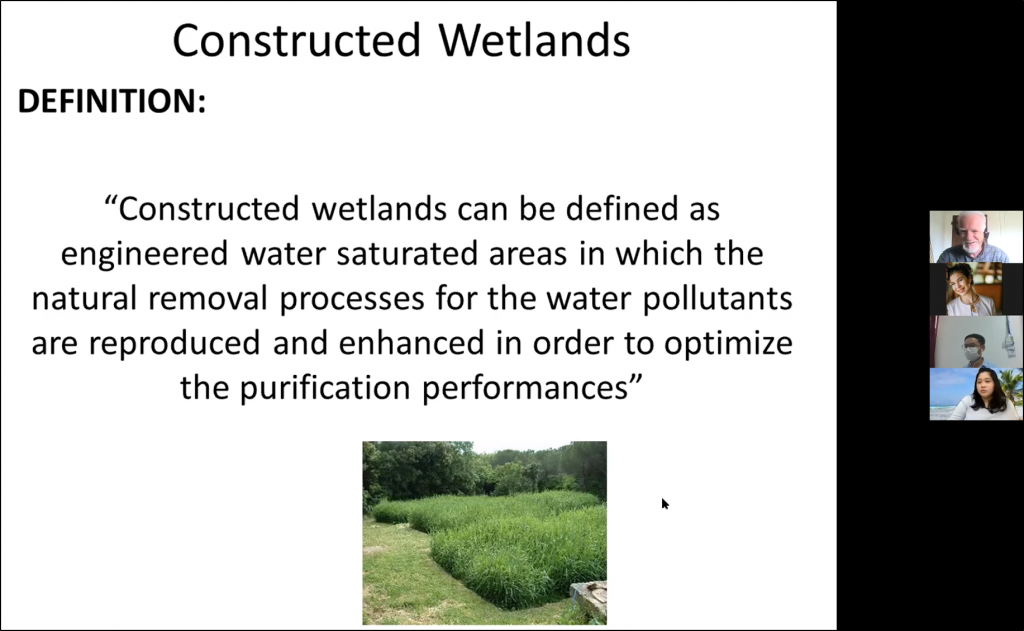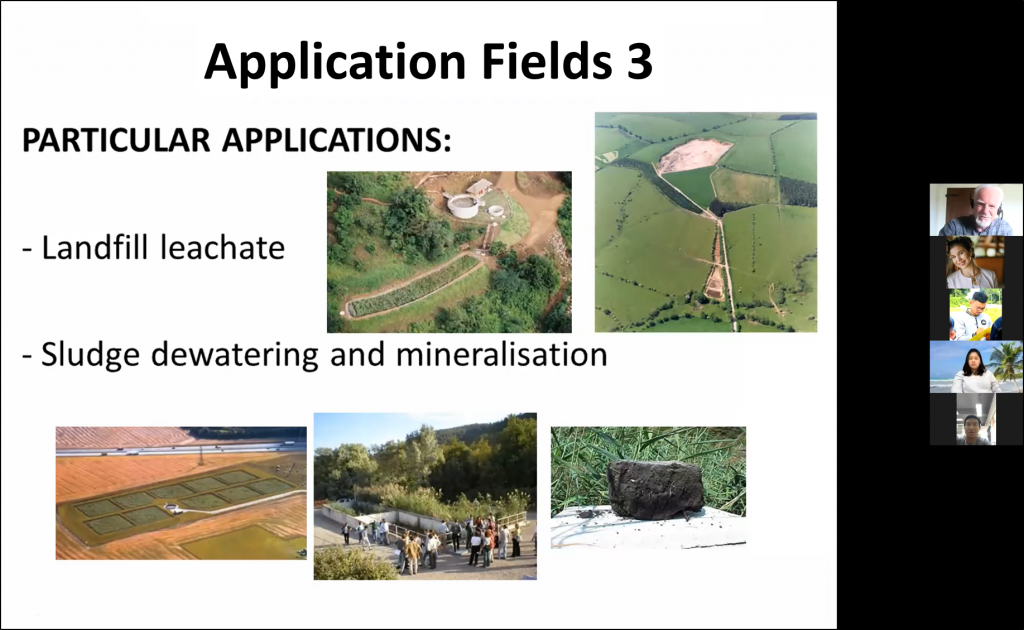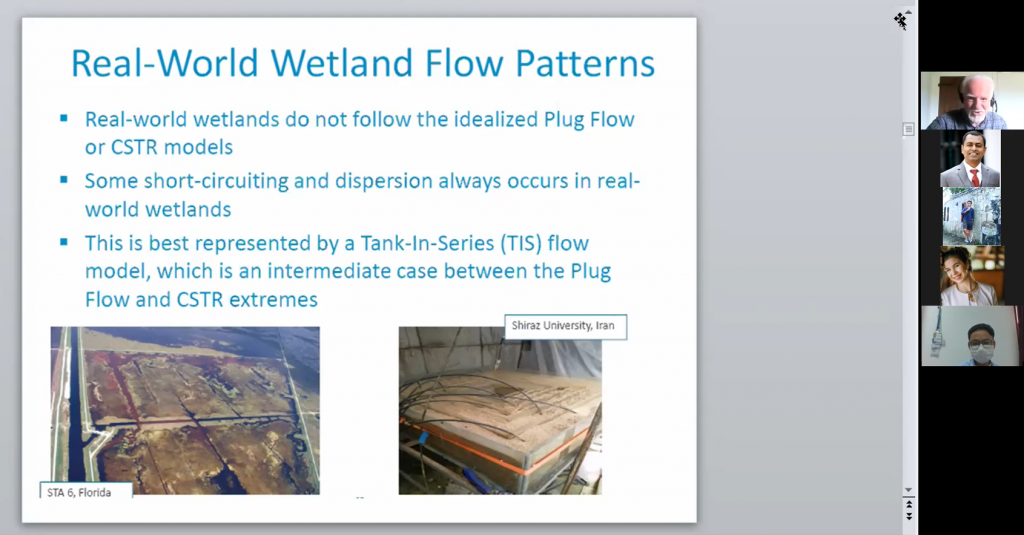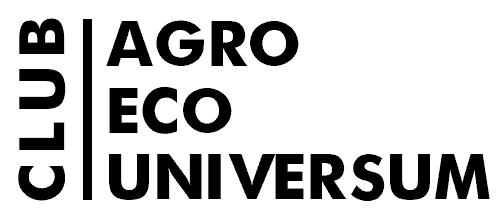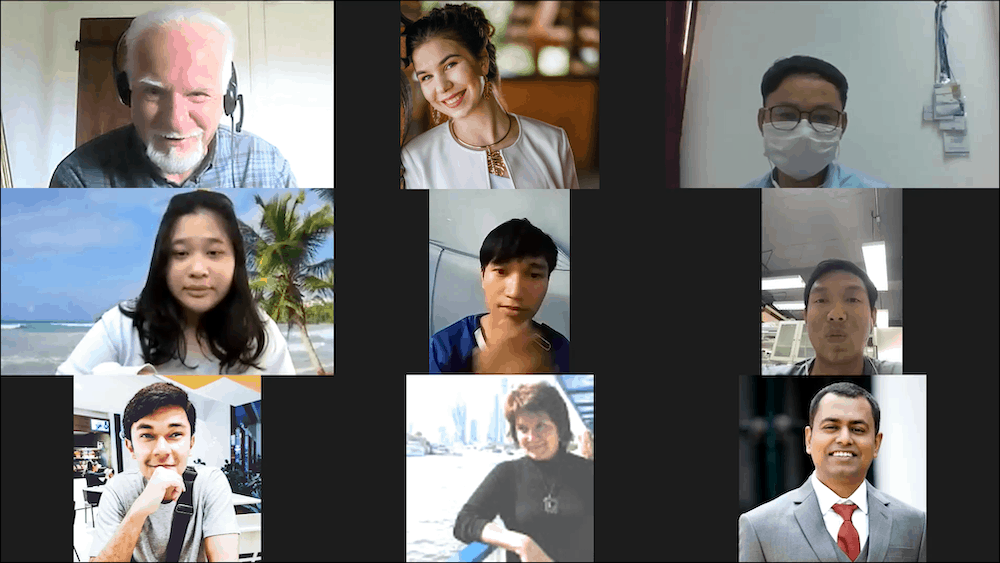On April 22, AEU Club successfully held a teleconference for teams of young scientists from Laos and Thailand, where Dr. Fabio Masi, Technical Director – R&D Manager at IRIDRA delivered a lecture on Constructed Wetlands. Within the project, the students are working with prominent professionals to design their own wastewater treatment facilities.
During his speech, Dr. Masi covered a wide spectrum of themes: from the basics of constructed wetlands design, to complex equilibrium in the wetland systems and dynamics of research development. He also touched upon the most important literature and outlined the generally recognized monographs, which set out the theoretical and practical foundations of the topic.
After that, the lecturer gave extensive information on the use of wetlands for the treatment of several types of wastewater, such as domestic sewage, industrial wastewater, agricultural wastewater, stormwater runoff, polluted river water, and urban runoff. Dr. Masi explained that these systems are also able to remove specific pollutants (organic compounds, suspended solids, nutrients, heavy metals, benzene, toluene, ethylene, xylene, pharmaceutical contaminants, pathogens, etc.) from wastewater.
In the next part of the presentation, the speaker spoke in detail about the methods and principles of calculating the area of Free-Water Surface, Horizontal and Vertical Subsurface Flow and Hybrid wetlands systems, Idealized Flow Models (Plug Flow and Continuously-Stirred Tank Reator (CSTR).
Real-world wetlands do not follow the idealized models. Some short-circuiting and dispersion always occurs in real-world wetlands. This is best represented by a Tank-In-Series (TIS) flow model, which is an intermediate case between the Plug Flow and CSTR extremes.
Further, Dr. Masi described in detail the Tank-In-Series (TIS) Flow Model, namely mathematical representation, average values parameters of model, pollutant weathering, example concentrations and rate coefficients for pollutants, mass loading rates.
An important emphasis was placed on the calculation of the oxygen balance in Vertical Subsurface Flow Wetlands when calculating the area and volume of the system and lay-out of a typical “French Constructed Wetland”.
On April 26, in the framework of the project on teleconferences, Philippe Michel, CEO of SCIRPE engineering company, will deliver a lecture on wastewater treatment for the student teams from Russia and Vietnam.
After the series of lectures, the teams will proceed to creating scientific technological concepts for real wastewater treatment facilities under the supervision of the experts.
